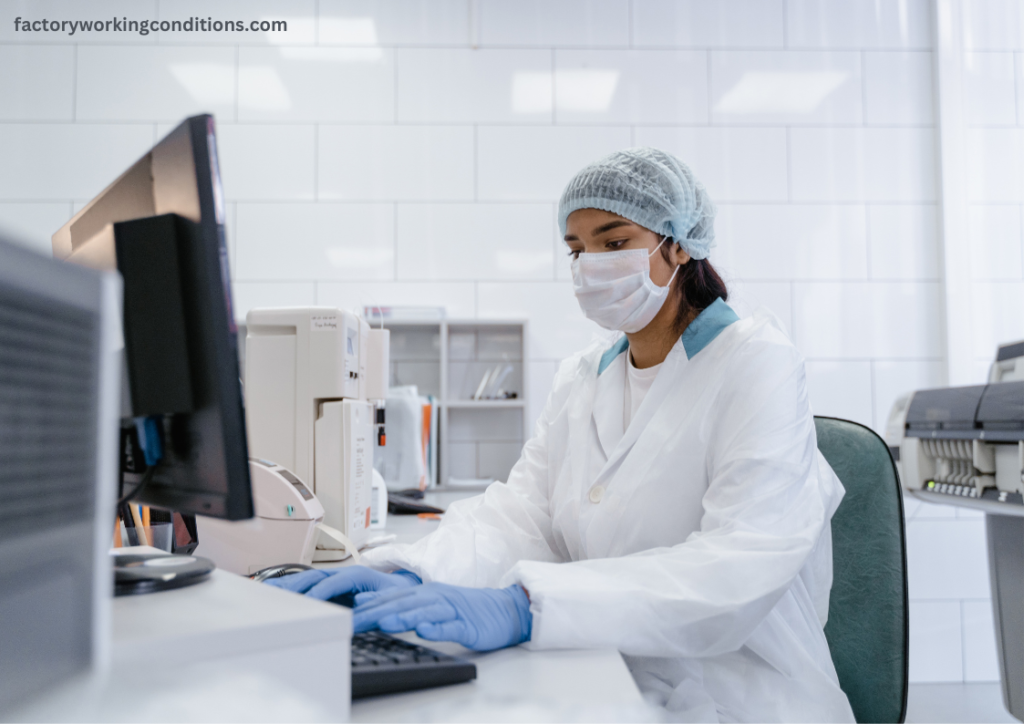
The COVID-19 pandemic has left a negative impact on the manufacturing industry, forcing it to adapt rapidly to unprecedented challenges. While it has been a time of uncertainty, it has also been a time of innovation, resilience, and transformation. As the pandemic rages on, manufacturers have realized that they must reimagine how they operate, putting the health and well-being of their employees at the forefront.
This article will explore the critical adaptations made in the post-pandemic factory workplace, focusing on remote work, enhanced safety protocols, and strategies to ensure worker health and well-being in future crises.
Remote Work in Manufacturing
The pandemic catalyzed a remarkable shift in the manufacturing sector, traditionally characterized by on-site work and assembly lines. Companies embraced remote work to sustain operations while ensuring employee safety. While remote work may be a partial solution, it has demonstrated its value and flexibility for specific roles within the manufacturing industry.
1. Administrative Roles: The pandemic prompted manufacturing firms to decentralize their operations, allowing administrative employees to work from home. This not only reduced the risk of infection but also enabled businesses to explore opportunities for reduced office space and related costs.
2. Design and Engineering: Remote work became a viable option for design and engineering professionals in the manufacturing industry. Cloud-based design software, collaboration tools, and 3D modeling made it possible to maintain productivity without being physically present in the workplace.
3. Sales and Customer Support: Manufacturing companies adapted by allowing sales and customer support teams to work remotely, connecting with clients through digital channels. This shift to remote work not only kept business operations afloat but also improved client interactions, potentially becoming a long-term strategy for sales and customer engagement.
Enhanced Safety Protocols
The pandemic introduced a new era of workplace safety in manufacturing, highlighting the need for stringent health and safety measures to protect employees.
1. Social Distancing and Redesigning Workspaces: Maintaining a safe distance between employees on the production floor became a priority. Manufacturers reconfigured workstations, assembly lines, and break areas to ensure social distancing guidelines were followed. This not only minimized the risk of virus transmission but also improved overall working conditions.
2. Personal Protective Equipment (PPE): The use of PPE was significantly amplified in manufacturing. Face masks, gloves, and face shields became commonplace, providing additional protection for workers. PPE became an essential part of daily routines, and manufacturers invested heavily in ensuring a steady supply of quality protective equipment.
3. Sanitization and Hygiene: Manufacturers ramped up cleaning and disinfection efforts to maintain a hygienic working environment. Frequent handwashing and hand sanitizing stations were installed throughout facilities, and rigorous cleaning schedules were implemented.
4. Testing and Contact Tracing: Many manufacturers adopted regular testing and contact tracing protocols to identify and isolate cases of COVID-19 quickly. This not only protected employees but also ensured a swift response to prevent widespread outbreaks.
Ensuring Worker Health and Well-Being
The pandemic highlighted the importance of safeguarding the physical and mental health of manufacturing employees. In addition to adapting to immediate challenges, manufacturers are exploring long-term strategies to support worker health and well-being in future crises.
1. Mental Health Support: The isolation and stress caused by the pandemic prompted manufacturers to prioritize mental health support for employees. Many offered access to counseling services, stress management programs, and mental health resources to help workers cope up with the psychological impact of the crisis.
2. Employee Wellness Programs: Manufacturing firms have recognized the value of employee wellness programs. These programs, which include exercise routines, healthy eating initiatives, and overall well-being guidance, not only boost employee health but also enhance overall morale and productivity.
3. Flexible Scheduling: Manufacturers have explored flexible scheduling options, which allow employees to balance work and personal life better. Flexible schedules help employees manage their responsibilities and reduce the impact of unforeseen crises.
4. Emergency Preparedness Plans: Manufacturers have realized the necessity of creating comprehensive plans. These plans outline responses to crises, ensuring employees are informed and protected when unforeseen events occur.
The Future of Factory Workplace Adaptations
As we look to the future, the adaptations made in the post-pandemic factory workplace will continue to shape the industry’s trajectory. Manufacturers are embracing a holistic approach to adapt to the ever-changing landscape.
1. Technology Integration: The pandemic accelerated the adoption of advanced technologies in manufacturing. Automation, robotics, and AI are increasingly integrated into the manufacturing process to reduce the reliance on human labor and minimize the risk of future disruptions.
2. Supply Chain Resilience: Manufacturers are reevaluating their supply chain strategies, focusing on local sourcing and diversification to reduce the impact of global disruptions. This not only ensures a consistent supply of materials but also contributes to economic resilience.
3. Sustainability Initiatives: The pandemic has underscored the importance of environmental sustainability. Manufacturers invest in eco-friendly technologies and processes to align with global efforts in combating climate change and enhancing the planet’s well-being.
The future of manufacturing will be defined by technology integration, supply chain resilience, and sustainability initiatives, ensuring that the industry can withstand unforeseen challenges and provide a safe, healthy, and productive environment for its workforce. As manufacturers navigate uncertainty, the lessons learned during the pandemic will be a blueprint for the industry’s future success and resilience.
